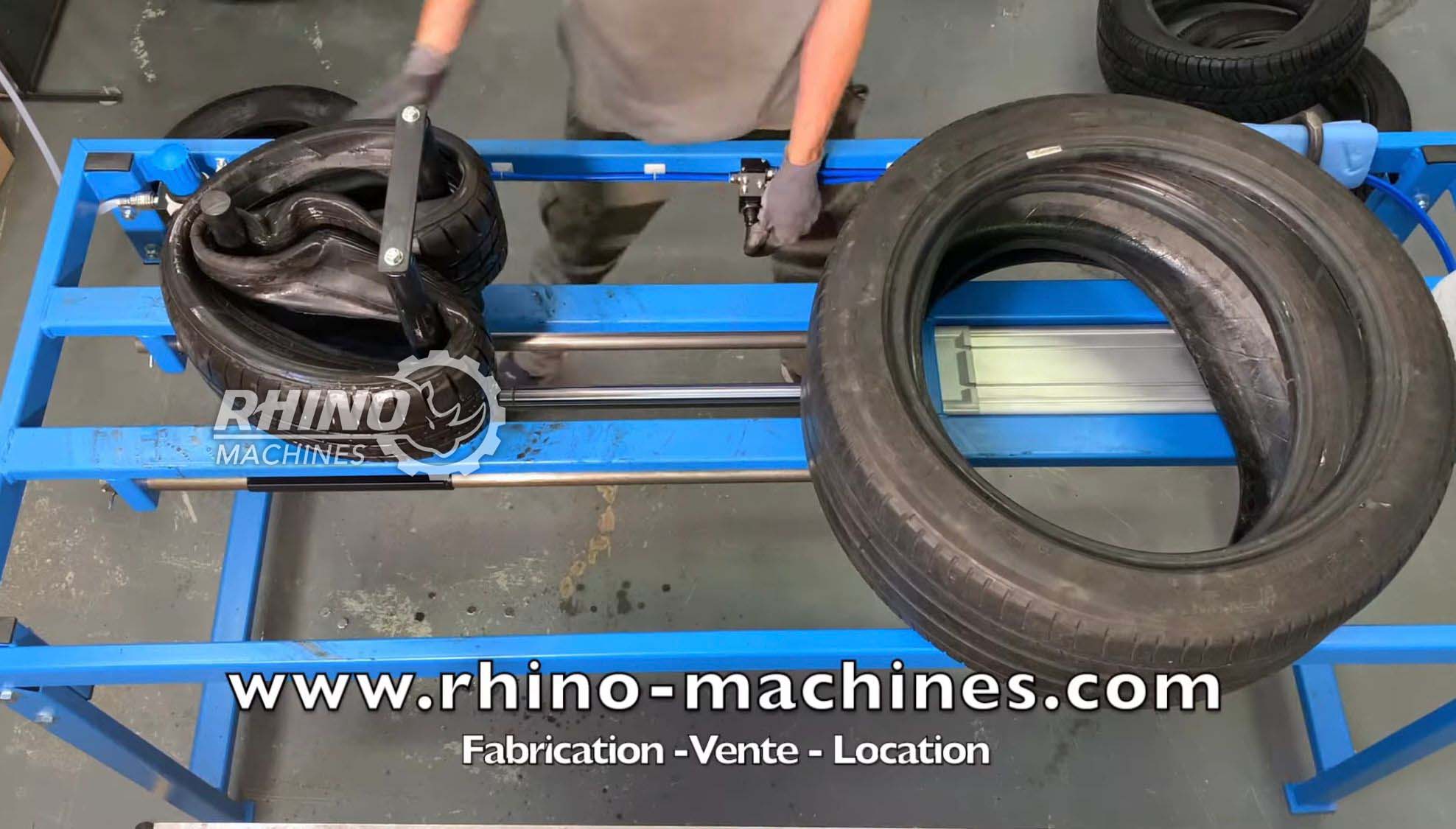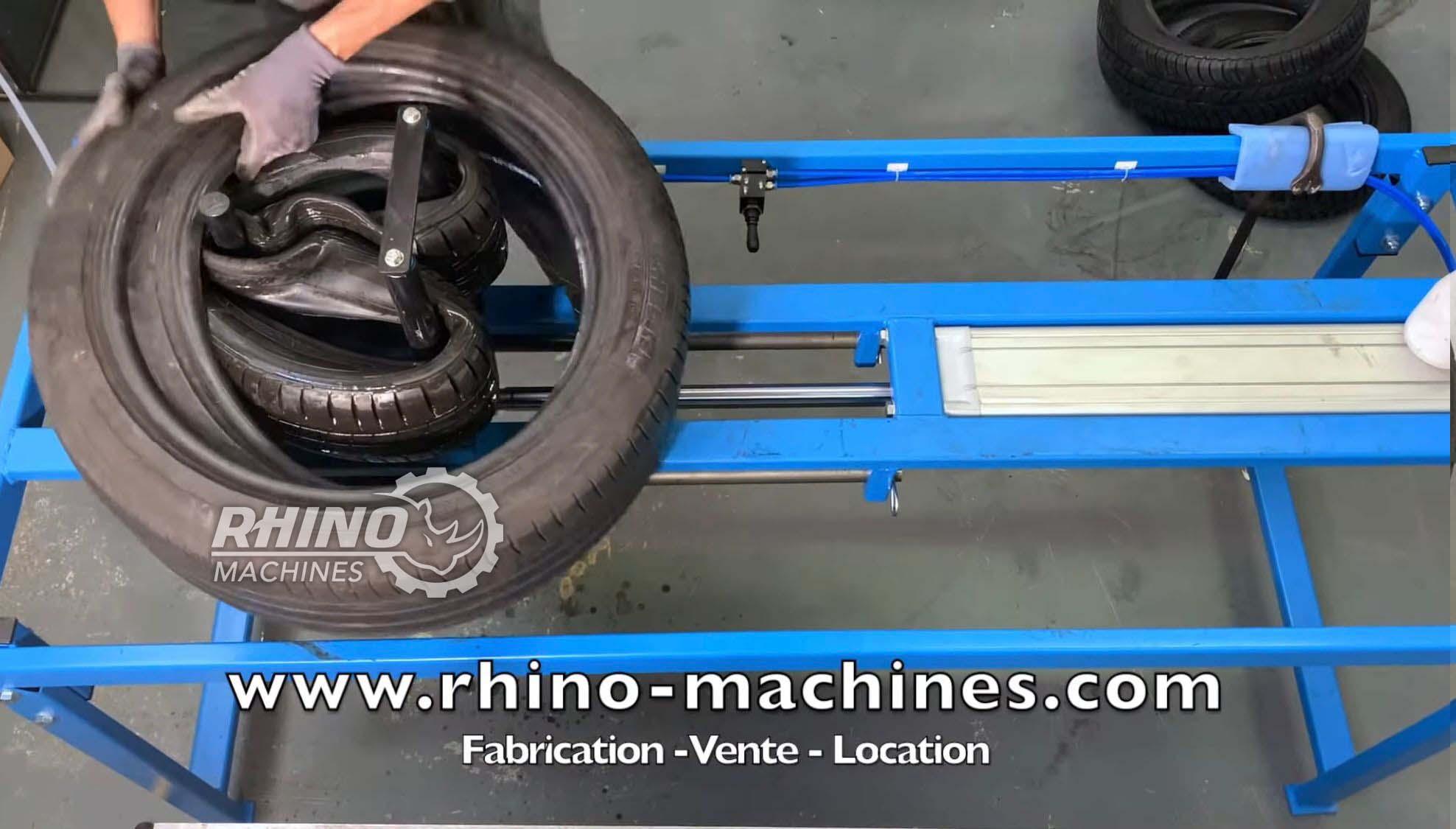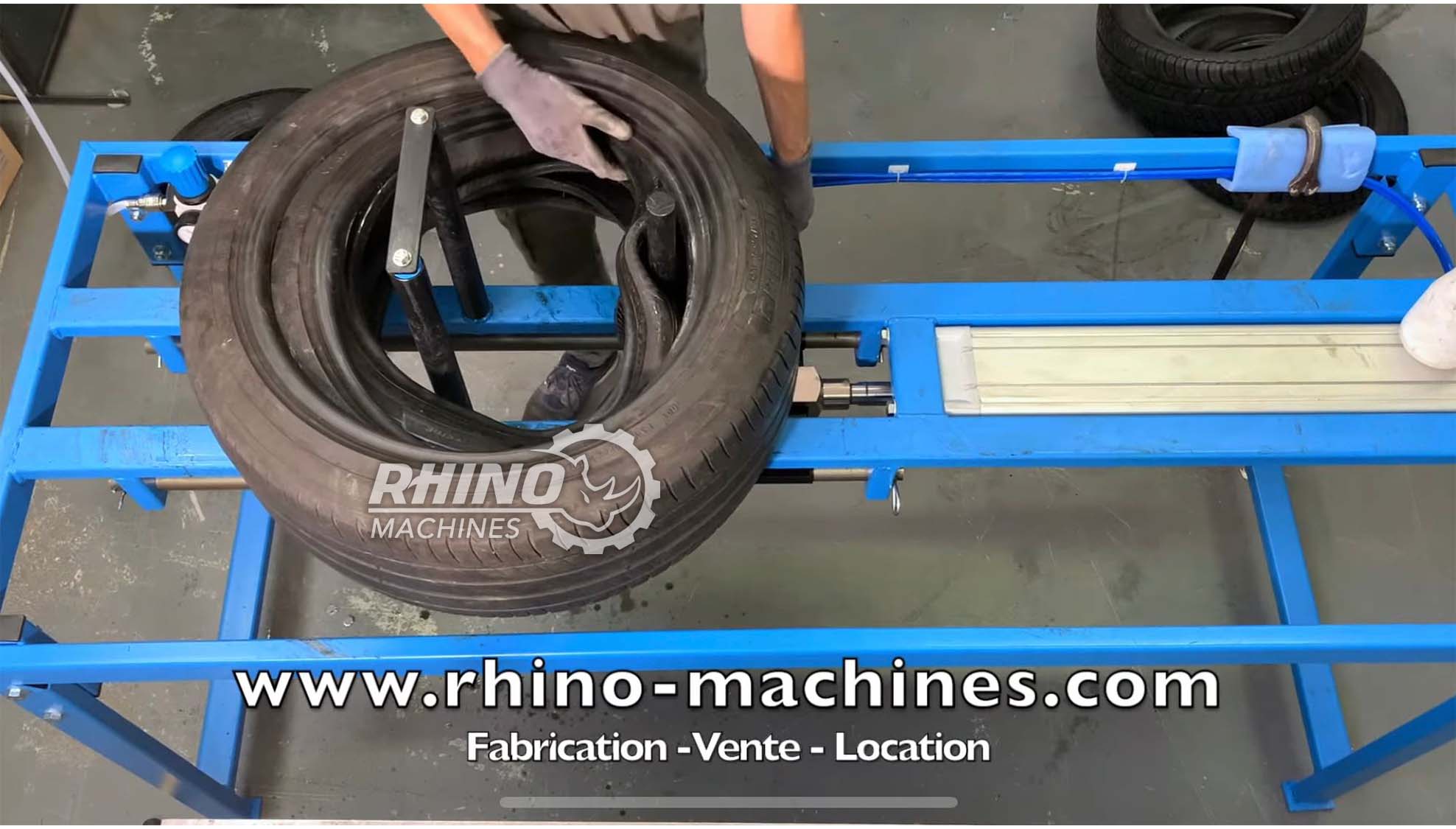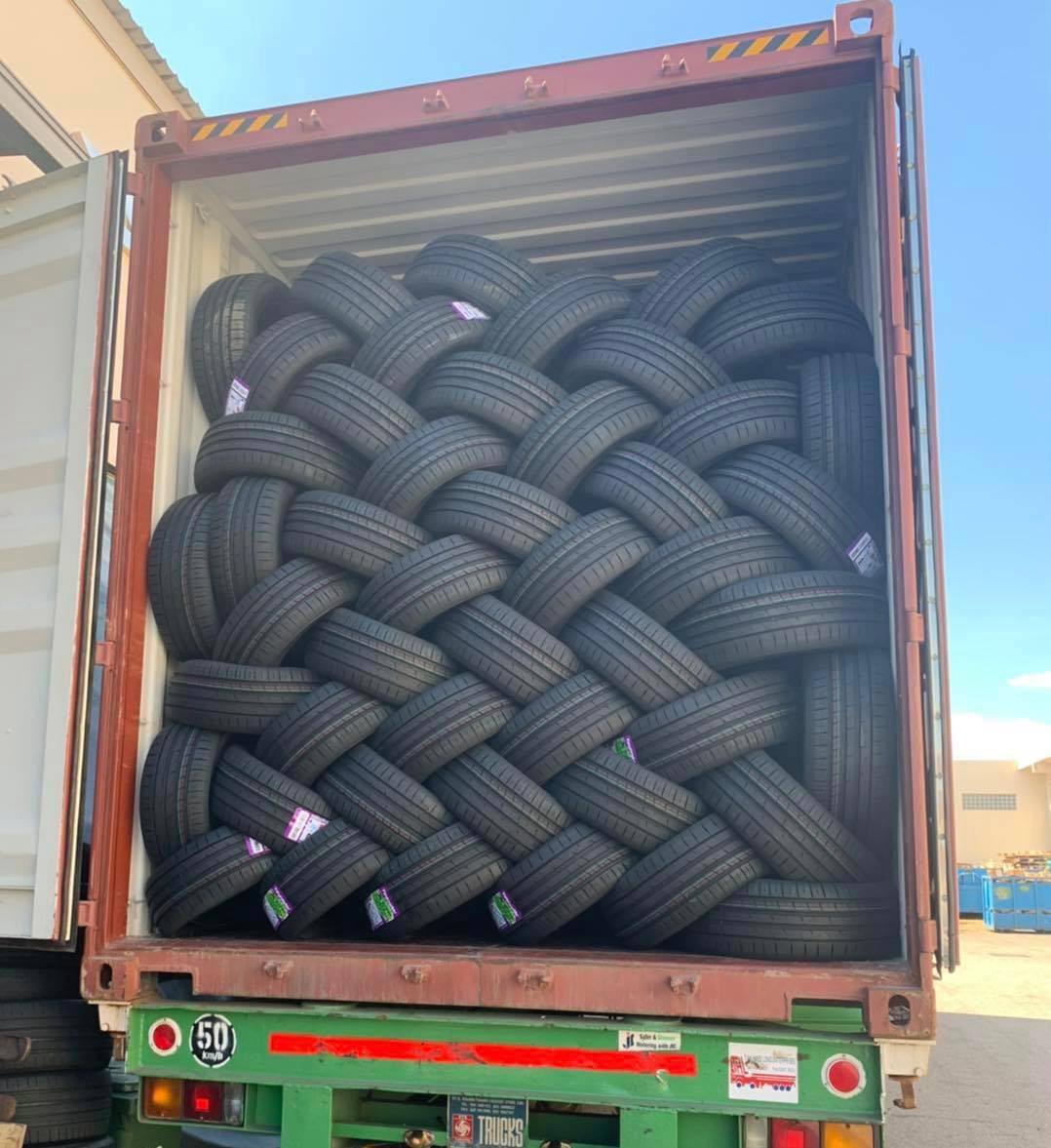How to export tires in containers
What is tire tripling?
Tire tripling is a technique that allows reducing the volume of tires by nesting them inside each other. They are then packed in lots of 3 or more to reduce stock volume, which is a clear advantage during export. Without this technique, instead of sending 1,200 tires, it is possible to send over 3,500 with tire tripling. Without this method, exporting used tires in containers is not profitable due to shipping and customs costs. With it, the generated profits are much higher.
How to triple tires?
Tripling by hand
Tripling tires manually is possible, but it is a method we do not recommend for several reasons: time, results, cost, and uncertainty.
The first reason is that manual tire tripling requires significant physical effort and is not fast enough for large volumes. There are service providers who do this, but the cost ranges from €0.50 to €3 per tire. For a full container, this can sometimes exceed the cost of suitable equipment. These providers often perform this as a secondary activity, so their availability is limited, and several weeks may be necessary, even if the container is already scheduled. Additionally, the manual method does not respect the natural folding direction of the tires, which can lead to deformation, loss of value, and if the tires are too damaged or improperly inserted, customs may block the shipment for waste transport rather than merchandise transport.
In conclusion, we do not recommend basing your business on this method, as it is too uncertain and very costly compared to using appropriate equipment.
With the Rhino tripling machines
The Rhino tripling machine allows the work to be done easily, safely, quickly, and at a low purchase cost. We designed the machine to be simple to use, with a single lever. This means only one operator is needed, and the learning time is almost zero. The production rate is high, allowing a lot to be processed in less than a minute. With the machine, you maintain control over the preparation of your lots in a safe and productive way, at a lower cost than manual tripling from the very first shipment.
How to use the Rhino tripling machine
The operation is very simple; just follow the 3 images below. After compressing the tire, choose a tire or a larger lot, insert it around, then decompress.
This way, you will have completed a tripling in a few seconds. Then repeat as many times as you like.

1 – Compress the tire

2 – Place the tire around

3 – Decompress
Sourcing used tires for export
Tire collection
Where to find your used tires? Very simple: visit garages around you to collect them for free or at a very low price, depending on their condition. This will be financially advantageous. You will help the garages that own used tires avoid paying for recycling. Garages typically pay recycling companies around €150 per ton, which is about 120 tires—a cost they can avoid. They also save on renting collection bins, which is often mandatory.
Purchasing from wholesalers
Purchasing from wholesalers is possible; however, the wholesaler’s commission significantly reduces profits, and availability is not always guaranteed.
Exporting used tires
Avoiding customs issues
It is important to know that customs regulations for exporting used tires are in place to prevent the transfer of waste from one country to another.
To avoid any customs issues, it is important that the tires are not too worn. It is not recommended to send tires that are too smooth or damaged.
After tripling, it is preferable that the tire has regained its original circular shape. If not, you can usually press inside the tire with your foot so that it fits correctly, thus avoiding customs issues.
How to store tires in the container?

To store tires in the container, it is preferable to use the chaining technique, meaning to nest them inside each other as follows:
This technique allows you to maximize the number of tires in a container by using the empty space inside the tires. Note that in this photo, all the tires are the same size, but it is also possible to perform chaining with tires of different sizes.
How many tires in a container?
Let’s take the example of a 40-foot container: this would represent between 1,000 and 1,100 lots of tires packed in threes. Therefore, there will be a total of 3,000 to 3,500 tires.
Lots of 3 are generally the most suitable to avoid exceeding the maximum allowed weight and risking container blockage. Additionally, storage will be much easier.
The maximum weight is generally 27.6 tons, which represents about 1,080 lots of 3 tires, or 25.5 kilos per lot.
Contact Us
Address
4 avenue Pierre Mauroy, 59280 Armentière, France
Phone
